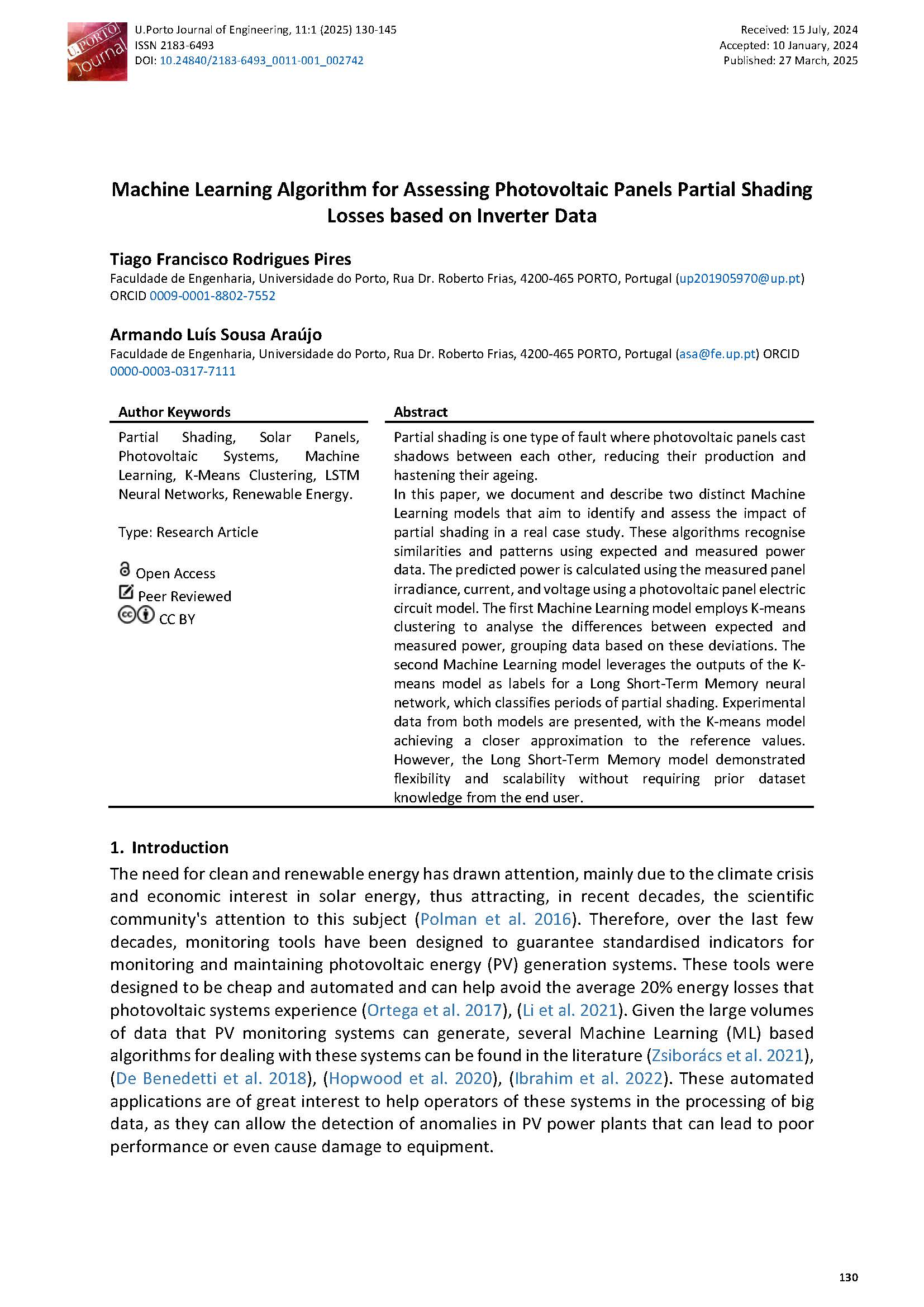Machine Learning Algorithm for Assessing Photovoltaic Panels Partial Shading Losses based on Inverter Data
Main Article Content
Abstract
Partial shading is one type of fault where photovoltaic panels cast shadows between each other, reducing their production and hastening their ageing. In this paper, we document and describe two distinct Machine Learning models that aim to identify and assess the impact of partial shading in a real case study. These algorithms recognise similarities and patterns using expected and measured power data. The predicted power is calculated using the measured panel irradiance, current, and voltage using a photovoltaic panel electric circuit model. The first Machine Learning model employs K-means clustering to analyse the differences between expected and measured power, grouping data based on these deviations. The second Machine Learning model leverages the outputs of the K-means model as labels for a Long Short-Term Memory neural network, which classifies periods of partial shading. Experimental data from both models are presented, with the K-means model achieving a closer approximation to the reference values. However, the Long Short-Term Memory model demonstrated flexibility and scalability without requiring prior dataset knowledge from the end user.
Downloads
Article Details

This work is licensed under a Creative Commons Attribution 4.0 International License.
Authors who publish with this journal agree to the following terms:
- Authors retain copyright and grant the journal right of first publication with the work simultaneously licensed under a Creative Commons Attribution License that allows others to share the work with an acknowledgement of the work's authorship and initial publication in this journal.
- Authors grant the journal the rights to provide the article in all forms and media so the article can be used on the latest technology even after publication and ensure its long-term preservation.
- Authors are able to enter into separate, additional contractual arrangements for the non-exclusive distribution of the journal's published version of the work (e.g., post it to an institutional repository or publish it in a book), with an acknowledgement of its initial publication in this journal.
- Authors are permitted and encouraged to post their work online (e.g., in institutional repositories or on their website) prior to and during the submission process, as it can lead to productive exchanges, as well as earlier and greater citation of published work (See The Effect of Open Access).

